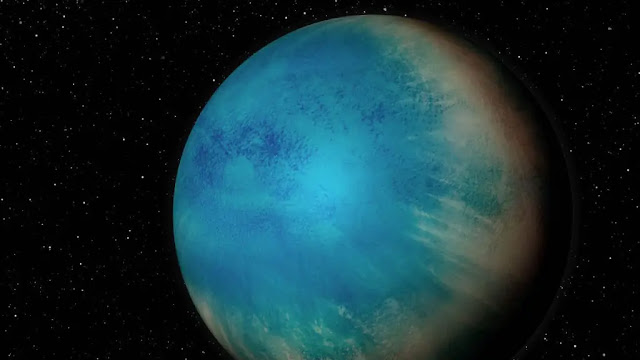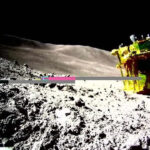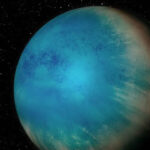The telescope, set to revolutionize our understanding of the cosmos, has already begun to reveal intriguing information about distant worlds. In this article we delve into the surprising discovery made by the JWST, which hints at the possibility of extraterrestrial life on the exoplanet K2-18 b, located a staggering 120 light-years from Earth.
The enigmatic exoplanet K2-18 b
K2-18 b, a sub-Neptune planet, lies within the habitable zone of a red dwarf star. It is a celestial body that has fascinated astronomers since its discovery by NASA’s Kepler telescope in 2015. What made K2-18 b particularly intriguing was the revelation by NASA’s Hubble telescope in 2018 that it hosts water in its atmosphere.
In a groundbreaking study uploaded to the arXiv preprint server on Sept. 11, researchers harnessed JWST’s capabilities to examine light passing through K2-18 b’s atmosphere. The result was the most detailed atmospheric spectrum ever obtained of a habitable sub-Neptune planet. It revealed a composition rich in hydrogen, methane, and carbon dioxide, along with traces of ammonia. These chemical markers suggest the tantalizing possibility that K2-18 b may be a “Hicean” world, characterized by a hydrogen-rich atmosphere enveloping an icy mantle.

Hycean Worlds: A Refuge for Extraterrestrial Life?
Hycean worlds, such as the one K2-18 b might represent, are tantalizing prospects for extraterrestrial life. However, the mere presence of water and a hydrogen-rich atmosphere does not guarantee the planet’s suitability for life as we know it. Conditions could still be too extreme, lacking essential nutrients and chemicals needed to support life as we understand it.
One of the most intriguing findings from this study is the possible detection of dimethyl sulfide (DMS) in the atmosphere of K2-18 b. DMS is a distinctive chemical typically associated with microscopic life in Earth’s oceans, primarily phytoplankton. It is composed of sulfur, carbon, and hydrogen and constitutes a key biological signature on our planet. However, it is important to proceed with caution, as further validation is needed to confirm the presence of DMS. There is also the possibility that some unknown geological process is responsible for its production and not biological life.
The importance of the Hycean worlds
Regardless of whether K2-18 b hosts alien life forms or not, this study emphasizes the importance of Hycean worlds in our search for extraterrestrial life. Traditionally, the focus has been on smaller, rocky exoplanets, but Hycean worlds offer a more conducive environment for atmospheric observations. Their prevalence in the galaxy, particularly sub-Neptunes, makes them intriguing subjects of study.
The power of the James Webb Space Telescope
The success of this study is largely due to the incredible capabilities of the JWST. Compared to its predecessors, such as the Hubble and Kepler telescopes, the expanded wavelength range and unprecedented sensitivity of the JWST have provided an unparalleled level of detail. At least eight times as many observations with the Hubble telescope would have been needed to achieve a similar result.
What awaits us
Researchers are already planning to use JWST for further investigations into K2-18 b. The hope is to find more evidence of extraterrestrial life on this distant exoplanet. If successful, such a discovery would be nothing short of revolutionary and would reshape our understanding of our place in the universe.
The James Webb Space Telescope has taken a major step forward in the quest to unlock the secrets of distant worlds. K2-18 b, with its possible hints of extraterrestrial life, is a symbol of the telescope’s extraordinary capabilities. As we continue to explore the cosmos, we may soon find ourselves on the cusp of even more profound revelations about the existence of life beyond Earth.



